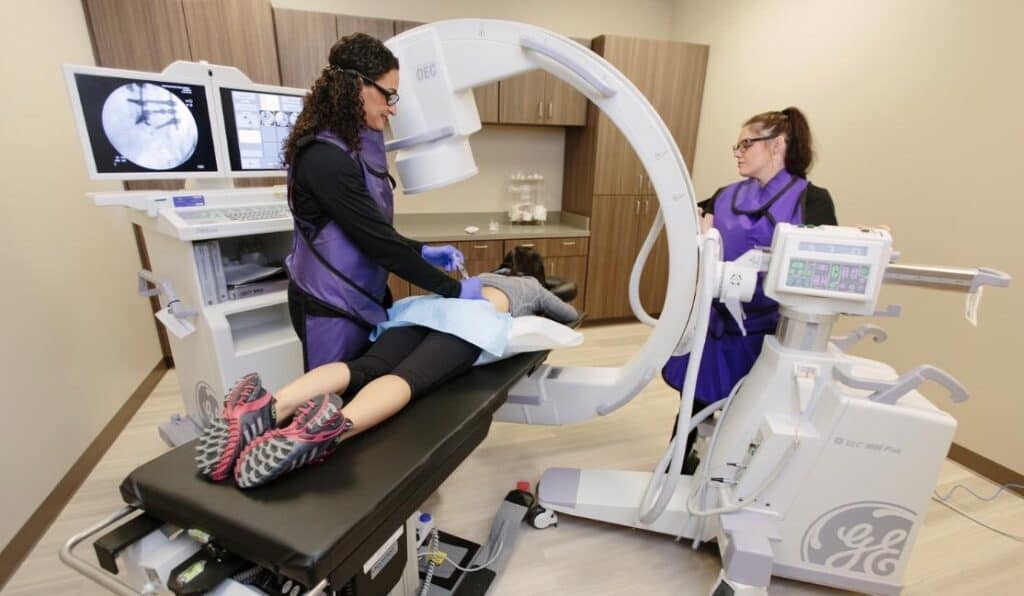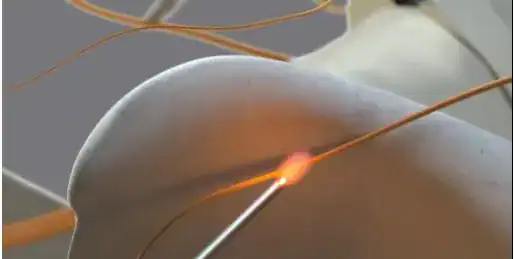Biacuplasty
Learn about the biacuplasty procedure, a cutting-edge technique for chronic back pain relief. Discover how this minimally invasive treatment works, its benefits, potential risks, and frequently asked questions.

Are you tired of living with chronic pain? Seeking a solution that goes beyond traditional treatments? Look no further than the biacuplasty procedure. This innovative and minimally invasive technique offers effective relief for individuals suffering from chronic pain conditions. In this article, we will delve into the details of the biacuplasty procedure, exploring its process, benefits, and potential risks. So, let’s embark on a journey to discover how this groundbreaking treatment can help you regain control over your life.
During the biacuplasty procedure, a specialized needle-like device is inserted near the affected nerves under the guidance of fluoroscopy or ultrasound imaging. Once the needle is properly positioned, radiofrequency energy is delivered through the device, generating heat. This heat disrupts the pain signals by creating a precise and localized lesion on the targeted nerves. By interrupting the transmission of pain signals, the biacuplasty procedure provides long-lasting relief for individuals suffering from chronic pain conditions.

Minimally Invasive: Unlike traditional open surgeries, the biacuplasty procedure is minimally invasive, resulting in smaller incisions, reduced scarring, and faster recovery times.
Long-lasting Relief: The biacuplasty procedure offers long-lasting pain relief by targeting and interrupting pain signals at their source.
Non-Destructive: Unlike other techniques that may damage or remove nerves, the biacuplasty procedure preserves the integrity of nerves while still providing effective pain relief.
Minimal Side Effects: The risks associated with the biacuplasty procedure are minimal compared to traditional open surgeries, reducing the chances of complications and adverse effects.
Outpatient Procedure: In most cases, the biacuplasty procedure is performed on an outpatient basis, allowing patients to return home on the same day.
Infection: As with any procedure involving needle insertion, there is a small risk of infection. However, this risk is minimized through proper sterilization techniques and post-procedure care.
Bleeding: Some patients may experience minor bleeding at the needle insertion site. This is usually temporary and resolves on its own.
Nerve Injury: While the biacuplasty procedure is designed to avoid nerve damage, there is a slight risk of injury to surrounding nerves. However, this risk is significantly lower compared to traditional open surgeries.
Allergic Reactions: Although rare, some individuals may experience allergic reactions to the local anesthesia or other materials used during the procedure. It is important to discuss any known allergies with your healthcare provider before undergoing the biacuplasty procedure.
Limited Research: While the biacuplasty procedure has shown promising results, it is still a relatively new technique. Further research is underway to explore its long-term effectiveness and potential applications.
Q1: How long does the biacuplasty procedure take?
The duration of the biacuplasty procedure can vary depending on the number of nerves being treated. On average, the procedure takes approximately 30 to 60 minutes per area.
Q2: Is the biacuplasty procedure painful?
The biacuplasty procedure is designed to minimize discomfort. Local anesthesia is administered to numb the area, ensuring a pain-free experience during the procedure. Some patients may experience mild soreness or discomfort after the procedure, which can be managed with over-the-counter pain medication.
Q3: How soon can I expect pain relief after the biacuplasty procedure?
Many patients experience immediate pain relief following the biacuplasty procedure. However, it may take a few weeks for the full effects to be realized as the nerves heal and the lesion disrupts pain signals.
Q4: Are there any restrictions or precautions after the biacuplasty procedure?
Your healthcare provider will provide you with specific post-procedure instructions. Generally, it is recommended to avoid strenuous activities, heavy lifting, or excessive bending for a few days following the procedure. Your doctor will guide you on when it is safe to resume normal activities.
Q5: Are there any alternatives to the biacuplasty procedure?
There are several alternatives to the biacuplasty procedure, depending on the underlying cause and nature of your chronic pain condition. These may include physical therapy, medication, nerve blocks, or other minimally invasive procedures. It is best to consult with a pain management specialist to determine the most suitable treatment option for your specific case.
Q6: Will insurance cover the biacuplasty procedure?
Insurance coverage for the biacuplasty procedure may vary depending on your insurance provider and policy. It is advisable to contact your insurance company to determine coverage eligibility and any associated costs.
Conclusion
If chronic pain has been impacting your quality of life, the biacuplasty procedure offers a ray of hope. With its minimally invasive approach, long-lasting pain relief, and minimal risks, this innovative technique is revolutionizing the field of pain management. By targeting and disrupting pain signals, the biacuplasty procedure provides an effective solution for individuals seeking relief from chronic back pain conditions.
If you have back pain and would like to explore minimally and non-invasive treatment options, we would be happy to arrange a consultation with Dr. Matthias Wiederholz. He is available for the Biacuplasty Procedure and other minimally invasive procedures in Houston, Texas and Lawrenceville, New Jersey. Dr Suzanne Manzi is also available for Biacuplasty and other minimally invasive procedures in Houston and League City, Texas. Our team will work with you to create a personalized treatment plan to help you get back to the daily activities you enjoy.
